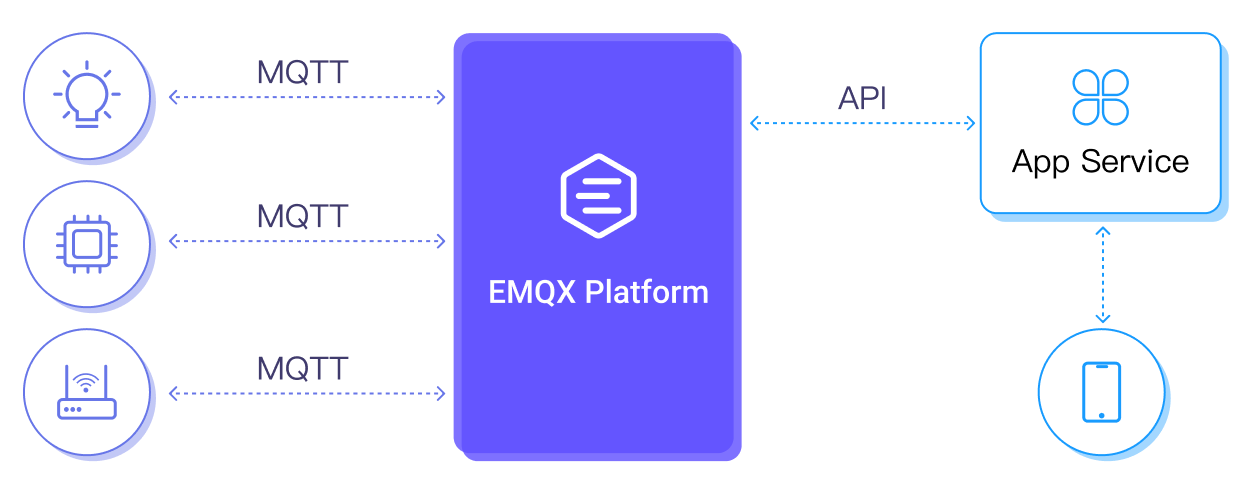Archery是一个开源的SQL审核和查询平台,旨在提升数据库管理的效率和安全性。它支持多种数据库(如MySQL、Oracle、PostgreSQL等),提供SQL审核、查询管理、权限控制、工单系统、性能监控以及报表统计等功能。通过自动化审核和规范化的操作流程,Archery帮助团队减少人为错误,优化数据库性能,同时确保数据操作的可追溯性和安全性,是数据库管理员和开发人员的得力工具。
功能清单
数据库
查询
审核
执行
备份
数据字典
慢日志
会话管理
账号管理
参数管理
数据归档
MySQL
√
√
√
√
√
√
√
√
√
√
MsSQL
√
×
√
×
√
×
×
×
×
×
Redis
√
×
√
×
×
×
×
×
×
×
PgSQL
√
×
√
×
×
×
×
×
×
×
Oracle
√
√
√
√
√
×
√
×
×
×
MongoDB
√
√
√
×
×
×
√
√
×
×
Phoenix
√
×
√
×
×
×
×
×
×
×
ODPS
√
×
×
×
×
×
×
×
×
×
ClickHouse
√
√
√
×
×
×
×
×
×
×
Cassandra
√
×
√
×
×
×
×
×
×
×
Doris
√
×
√
×
×
×
×
×
×
×
K8S部署 使用helm部署
1 helm upgrade --install archery douban/archery -f values.yaml --namespace archery
values.yaml
1 2 3 4 5 6 7 8 9 10 11 12 13 14 15 16 17 18 19 20 21 22 23 24 25 26 27 28 29 30 31 32 33 34 35 36 37 38 39 40 41 42 43 44 45 46 47 48 49 50 51 52 53 54 55 56 57 58 59 60 61 62 63 64 65 66 67 68 69 70 71 72 73 74 75 76 77 78 79 80 81 82 83 84 85 86 87 88 89 90 91 92 93 94 95 96 97 98 99 100 101 102 103 104 105 106 107 108 109 110 111 112 113 114 115 116 117 118 119 120 121 122 123 124 125 126 127 128 129 130 131 132 133 134 135 136 137 138 139 140 141 142 143 144 145 146 147 148 149 150 151 152 153 154 155 156 157 158 159 160 161 162 163 164 165 166 167 168 169 170 171 172 173 174 175 176 177 178 179 180 181 182 183 184 185 186 187 188 189 190 191 192 193 194 195 196 197 198 199 200 201 202 203 204 205 206 207 208 209 210 211 212 213 214 215 216 217 218 219 220 221 222 223 224 225 226 227 228 229 230 231 232 233 234 235 236 237 238 239 240 241 242 243 244 245 246 247 248 249 250 251 252 253 254 255 256 257 258 259 260 261 262 263 264 265 266 267 268 269 270 271 272 273 274 275 276 277 278 279 280 281 282 283 284 285 286 287 288 289 290 291 292 293 294 295 296 297 298 299 300 301 302 303 304 305 306 307 308 309 310 311 312 313 314 315 316 317 318 319 320 321 replicaCount: 1 image: repository: hhyo/archery tag: v1.11.3 pullPolicy: IfNotPresent nameOverride: "" fullnameOverride: "" service: type: LoadBalancer port: 80 targetPort: 9123 deployment: labels: {} annotations: {} ingress: enabled: false className: "nginx" annotations: {} paths: - / servicePort: 9123 hosts: - dba.archery.local tls: [] redis: embedded: false url: "rediss://*******:*******@*******:6379" mysql: embedded: false url: "mysql://*******:*******@*******:3306/archery" primary: configuration: |- [mysqld] default_authentication_plugin=mysql_native_password skip-name-resolve explicit_defaults_for_timestamp basedir=/opt/bitnami/mysql plugin_dir=/opt/bitnami/mysql/lib/plugin socket=/opt/bitnami/mysql/tmp/mysql.sock datadir=/bitnami/mysql/data tmpdir=/opt/bitnami/mysql/tmp bind-address=0.0.0.0 pid-file=/opt/bitnami/mysql/tmp/mysqld.pid log-error=/opt/bitnami/mysql/logs/mysqld.log port = 3306 skip-external-locking lower_case_table_names=1 default-time_zone = '+8:00' innodb_buffer_pool_size = 512M server-id = 100 log_bin = mysql-bin.log expire_logs_days = 1 max_binlog_size = 500M character-set-server = utf8mb4 collation-server = utf8mb4_general_ci slow_query_log_file = mysql-slow.log slow_query_log = 1 long_query_time = 1 [client] default-character-set=utf8mb4 socket=/opt/bitnami/mysql/tmp/mysql.sock plugin_dir=/opt/bitnami/mysql/lib/plugin [mysqldump] quick quote-names max_allowed_packet = 1024M [manager] port=3306 socket=/opt/bitnami/mysql/tmp/mysql.sock pid-file=/opt/bitnami/mysql/tmp/mysqld.pid persistence: enabled: true accessModes: - ReadWriteOnce size: 200Gi goinception: embedded: true image: repository: hanchuanchuan/goinception tag: v1.3.0 pullPolicy: IfNotPresent nameOverride: "" fullnameOverride: "" service: type: ClusterIP port: 4000 targetPort: 4000 initEnv: - name: BACKUP_HOST value: "*******" - name: BACKUP_PORT value: "3306" - name: BACKUP_USER value: "admin" - name: BACKUP_PASSWORD value: "*******" resources: {} envs: {}volumeMounts: - name: archery-settings subPath: local_settings.py mountPath: /opt/archery/local_settings.py - name: archery-settings subPath: soar.yaml mountPath: /etc/soar.yaml - name: archery-settings subPath: analysis_slow_query.sh mountPath: /opt/archery/src/script/analysis_slow_query.sh - name: archery-settings subPath: startup.sh mountPath: /opt/archery/src/docker/startup.sh - name: archery-settings subPath: init-archery.sh mountPath: /opt/archery/src/docker/init-archery.sh - name: archery-settings subPath: createsuperuser.py mountPath: /opt/archery/src/docker/createsuperuser.py nodeSelector: {}tolerations: []affinity: {}volumes: - name: archery-settings configMap: name: archery-config defaultMode: 420 - name: archery-download hostPath: path: /data/archery/downloads - name: archery-script hostPath: path: /data/archery/scripts configMap: enabled: true superuser: username: admin password: password email: "archery@example.com" data: local_settings.py: |- # -*- coding: UTF-8 -*- # override your configs here DEBUG = True # django跨域配置,登录账号报错Forbidden时要配置这个 CSRF_TRUSTED_ORIGINS = ["https://*.xxx.xx:443"] ENABLE_LDAP = True if ENABLE_LDAP: import ldap from django_auth_ldap.config import LDAPSearch AUTHENTICATION_BACKENDS = ( "django_auth_ldap.backend.LDAPBackend" , "django.contrib.auth.backends.ModelBackend" , ) AUTH_LDAP_SERVER_URI = 'ldap://xxxx:389' AUTH_LDAP_BIND_DN = 'cn=xxx,cn=Users,dc=xxx,dc=com,dc=cn' AUTH_LDAP_BIND_PASSWORD = 'xxx' AUTH_LDAP_USER_SEARCH = LDAPSearch('ou=xxx,dc=xxxx,dc=com,dc=cn',ldap.SCOPE_SUBTREE, '(cn=%(user)s)' ) AUTH_LDAP_ALWAYS_UPDATE_USER = True AUTH_LDAP_USER_ATTR_MAP = { 'username': 'cn' , 'display': 'sn' , 'email': 'mail' , } soar.yaml: |- # 是否允许测试环境与线上环境配置相同 allow-online-as-test: false # 是否清理测试时产生的临时文件 drop-test-temporary: true # 语法检查小工具 only-syntax-check: false sampling-data-factor: 100 sampling: false sampling-statistic-target: 100 profiling: false trace: false # 日志级别,[0:Emergency, 1:Alert, 2:Critical, 3:Error, 4:Warning, 5:Notice, 6:Informational, 7:Debug] log-level: 3 log-output: /opt/archery/logs/soar.log # 优化建议输出格式 report-type: markdown ignore-rules: - "" # 启发式算法相关配置 max-join-table-count: 5 max-group-by-cols-count: 5 max-distinct-count: 5 max-index-cols-count: 5 max-total-rows: 9999999 spaghetti-query-length: 2048 allow-drop-index: false # EXPLAIN相关配置 explain-sql-report-type: pretty explain-type: extended explain-format: traditional explain-warn-select-type: - "" explain-warn-access-type: - ALL explain-max-keys: 3 explain-min-keys: 0 explain-max-rows: 10000 explain-warn-extra: - "" explain-max-filtered: 100 explain-warn-scalability: - O(n) query: "" list-heuristic-rules: false list-test-sqls: false verbose: true analysis_slow_query.sh: |- #!/bin/bash DIR="$( cd "$( dirname "$0" )" && pwd )" cd $DIR #配置archery数据库的连接地址 monitor_db_host="archery-mysql" monitor_db_port=3306 monitor_db_user="root" monitor_db_password="MYSQL_ROOT_PASSWORD" monitor_db_database="archery" #实例慢日志位置 slowquery_file="/home/mysql/log_slow.log" pt_query_digest="/usr/bin/pt-query-digest" #实例连接信息 hostname="mysql_host:mysql_port" # 和archery实例配置内容保持一致,用于archery做筛选 #获取上次分析时间,初始化时请删除last_analysis_time_$hostname文件,可分析全部日志数据 if [ -s last_analysis_time_$hostname ]; then last_analysis_time=`cat last_analysis_time_$hostname` else last_analysis_time='1000-01-01 00:00:00' fi #收集日志 #RDS需要增加--no-version-check选项 $pt_query_digest \ --user=$monitor_db_user --password=$monitor_db_password --port=$monitor_db_port \ --review h=$monitor_db_host,D=$monitor_db_database,t=mysql_slow_query_review \ --history h=$monitor_db_host,D=$monitor_db_database,t=mysql_slow_query_review_history \ --no-report --limit=100% --charset=utf8 \ --since "$last_analysis_time" \ --filter="\$event->{Bytes} = length(\$event->{arg}) and \$event->{hostname}=\"$hostname\" and \$event->{client}=\$event->{ip} " \ $slowquery_file > /tmp/analysis_slow_query.log echo `date +"%Y-%m-%d %H:%M:%S"`>last_analysis_time_$hostname






